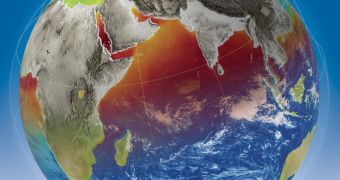Two new satellites, called FLEX and CarbonSat, have recently been selected by the European Space Agency (ESA) as the next possible members of the it's Earth Explorer Program, and as such have been awarded funding for further development.
Both spacecraft would carry instrumentation that would allow them to conduct top-notch climate and environmental research, related to how global warming and climate change are influencing our planet.
The missions were proposed under the Call for Earth Explorer Proposals that ESA launched to the scientific community and space industry in October 2009.
After the deadline for submissions expired, the agency had to decided between 31 proposals, each of which had its advantages and shortcomings. Four peer review panels were in charge of making the final selections of which missions are to be developed further.
The Earth Science Advisory Committee at the agency decided to go ahead with the Florescence Explorer (FLEX) and CarbonSat, which are soon to be presented to the ESA Program Board for Earth Observation (PBEO).
These two missions are considered to be the most scientifically relevant of the lot, review experts concluded in a report. As such, when PBEO member states met on November 24, they decided to go ahead and allow the projects to move to Phase-A/B1.
During this stage in their development, the two missions will get feasibility studies, as well as improvements and modifications in components that are not perfectly suited for the task.
The goal of the Earth Explorer program is to gain more insight into how our planet functions as an integrated system, rather than looking at its individual components. The main target of the new satellites would be the carbon cycle and its implications.
CarbonSat, for example, would keep track of CO2 and methane, which are the two most important greenhouse gases that humankind is outputting in large amounts on a daily basis.
On the other hand, FLEX would create and make available global maps of vegetation fluorescence, that could be construed into indicators of how much photosynthesis is being conducted on Earth.
This would further contribute to clearing up some of the mysteries related to how much CO2 the world's plant engulf and store. As forests are being destroyed, keeping track of natural carbon sink will become critical.
Additionally, further uses for FLEX and CarbonSat would see them working with the Sentinel-3 satellite. The spacecraft's Ocean and Land Colou Instrument and the Sea and Land Surface Temperature Radiometer could be recruited to create new views of the world's carbon cycle.

 14 DAY TRIAL //
14 DAY TRIAL //